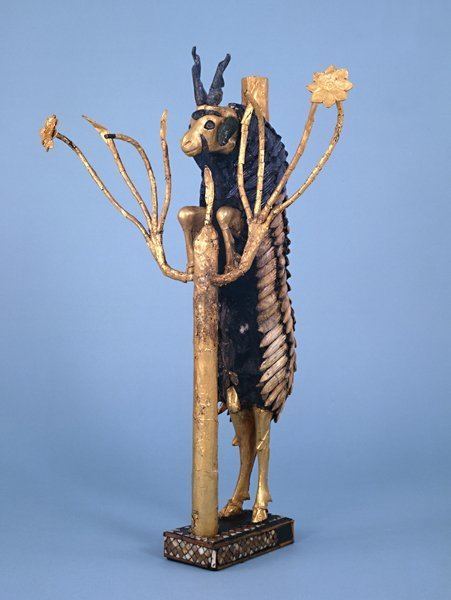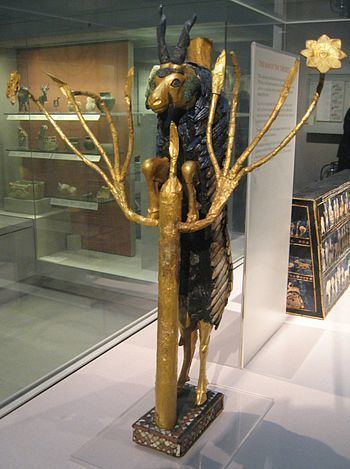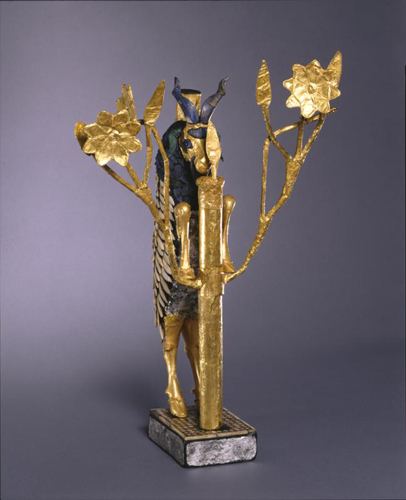Created 2600 BC | Registration ME 122200 Materials Gold, Copper | |
 | ||
Size 45.7 cm high, 30.5 cm wide Similar Standard of Ur, Warka Vase, Victory Stele of Naram‑Sin, Stele of the Vultures, The Story of Abraham | ||
The Ram in a Thicket is one of a pair of figures excavated in Ur, in southern Iraq, and which date from about 2600–2400 BC. One is currently exhibited in the Mesopotamia Gallery in Room 56 in the British Museum in London; the other is in the University of Pennsylvania Museum in Philadelphia, USA.
Contents
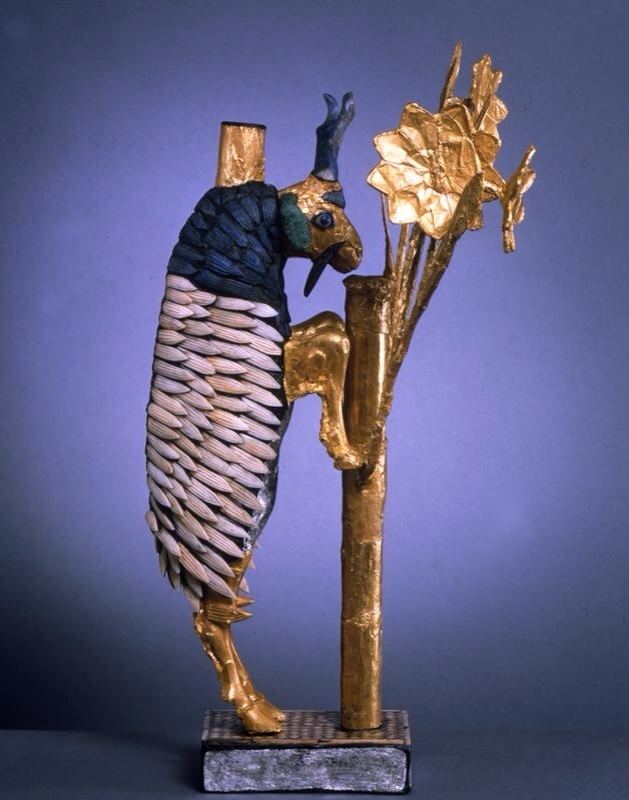
Discovery

The pair of rams would more correctly be described as goats, and were discovered lying close together in the 'Great Death Pit', one of the graves in the Royal Cemetery at Ur, by archaeologist Leonard Woolley during the 1928–9 season. Woolley was in charge of the joint venture between the British Museum and the University of Pennsylvania, and which began in 1922. The figure's partner is in the University of Pennsylvania Museum of Archaeology and Anthropology in Philadelphia.
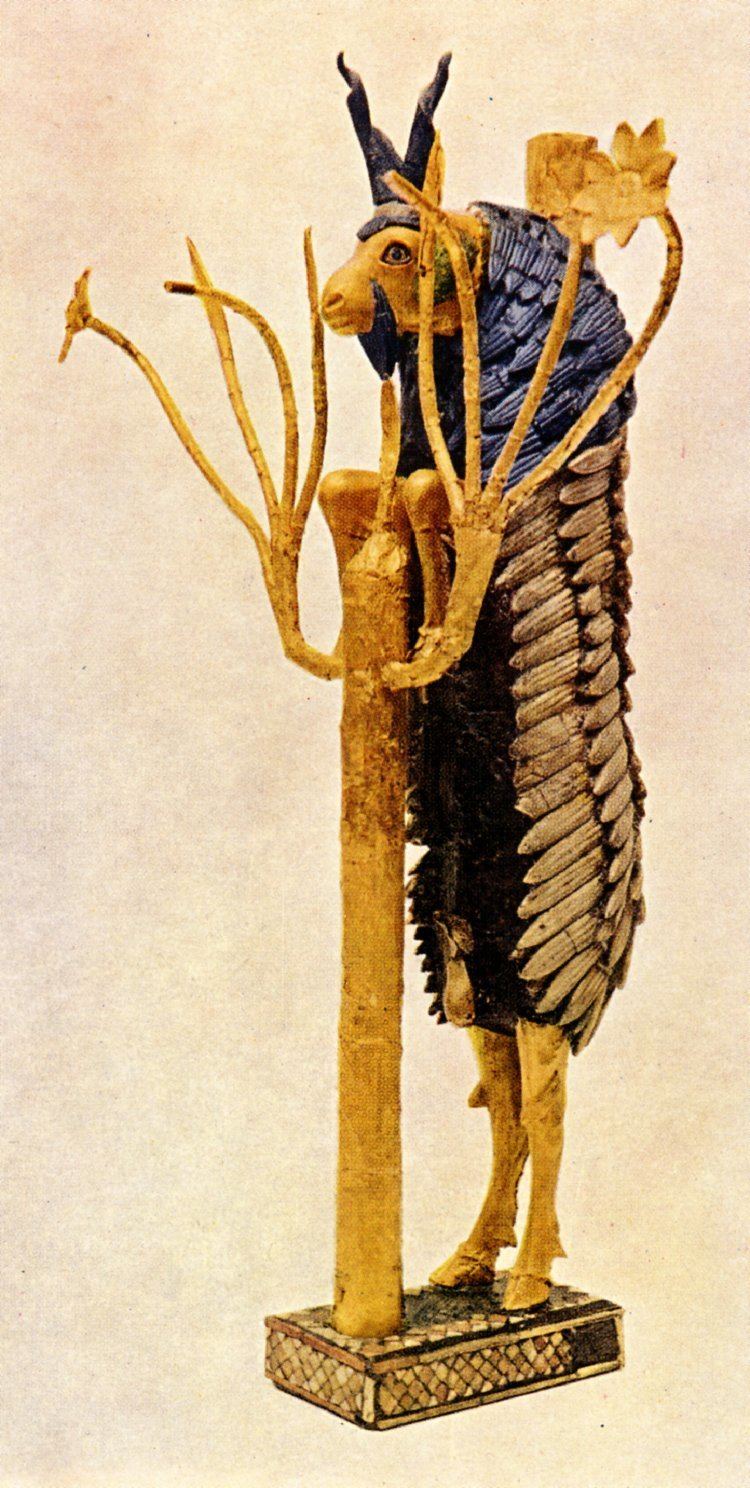
Woolley named the figure the 'Ram in a Thicket' after the passage in Genesis 22 v.13, where God orders the Biblical Patriarch Abraham to sacrifice his son Isaac, but, at the last moment Jehovah's Angel stopped Abraham telling him "Do not harm the boy and do not do anything at all to him, for now I do know that you are God-fearing because you have not withheld your son, your only one, from me. At that Abraham looked up and saw just beyond him a ram caught in a thicket by his horns. And Abraham went and took the ram, and offered him up for a burnt offering instead of his son'.
The figure
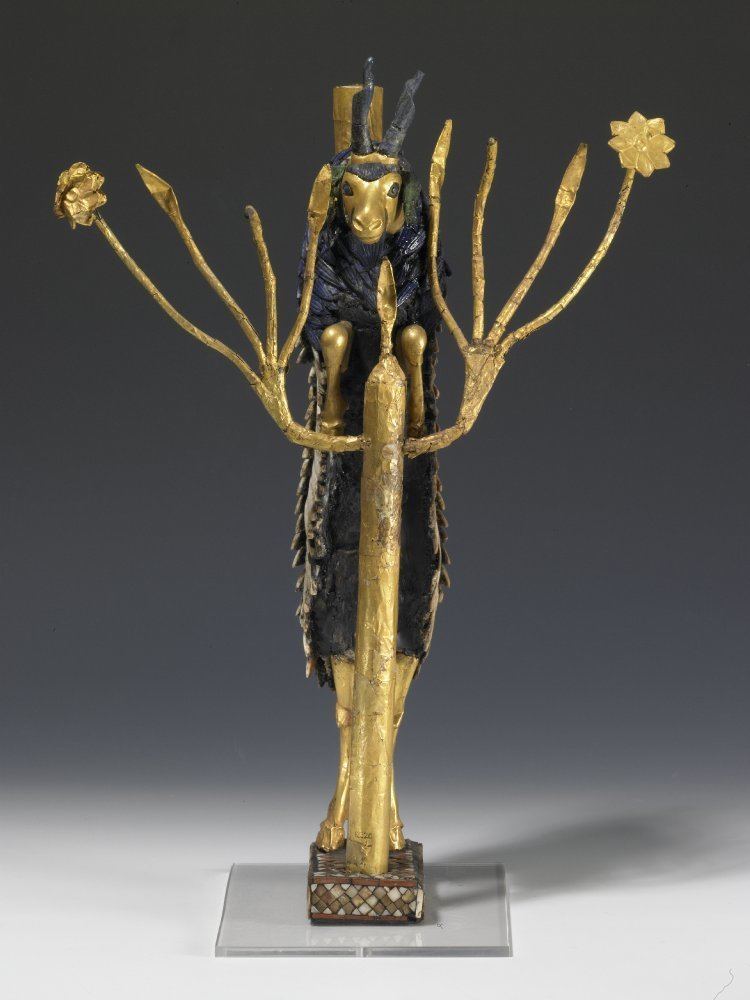
When it was discovered, the 16.5 inch figure had been crushed flat by the weight of the soil above it and its inner wooden core had decomposed. This wooden core had been finely cut for the face and legs, but the body had been more roughly modelled. Woolley used wax to keep the pieces together as it was excavated, and the figure was gently pressed back into its original shape. The ram's head and legs are layered in gold leaf which had been hammered against the wood and stuck to it with a thin wash of bitumen, while its ears are copper but which are now green with verdigris. The horns and the fleece on its shoulders are of lapis lazuli, and the body's fleece is made of shell, attached to a thicker coat of bitumen. The figure's genitals are gold, while its belly was silver plate, now oxidised beyond restoration. The tree is also covered in gold leaf with gold flowers. The figure stands on a small rectangular base decorated with a mosaic of shell, red limestone and lapis lazuli. The figure was originally attached to the flowering shrub by silver chains around its fetlocks, but these chains have completely decayed. It is thought that the two figures originally faced each other as confronted animals, and that the tubes going up from their shoulders were used to support something, probably a bowl or similar object.
